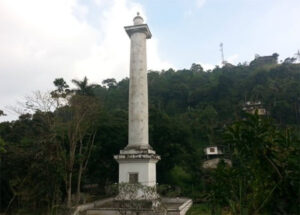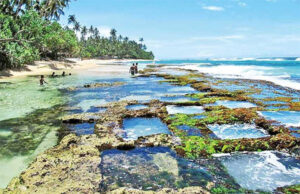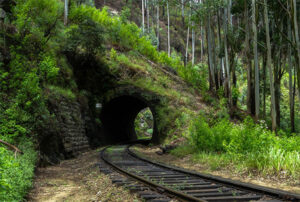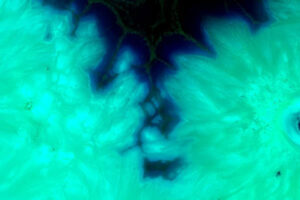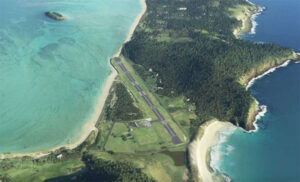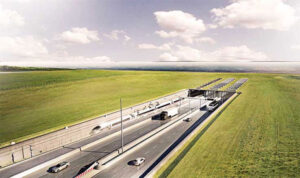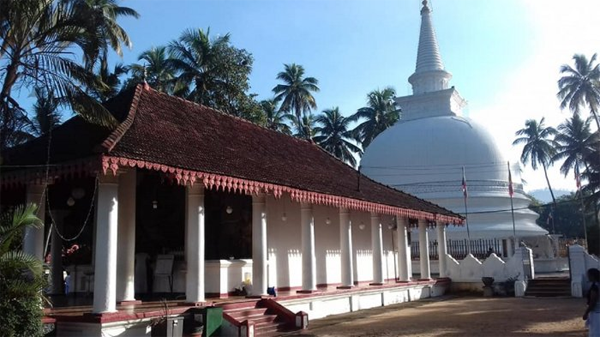
Badulla is the capital of the Uva Province. M. A beautiful mountain range situated 230 km away. It’s from the sea level. 680 meters above sea level. There are many tourists going to Badulla to watch mountainous Syria. Many people use trains for these journeys. There is a wall distant from Namunukula Hill. Many who go to Badulla are not looking at the city and the surrounding archeological and religious heritage. This is an attempt to inform you about this.
The city
Before surrendering to the British imperialists, this city was ruled by the Kandyan Kings. Uva province, which was appointed by the Kandyan king, ruled the city around it. Badulla was the headquarters of the Uva Rebellion against the English in 1818. Later this city became the administrative center of British imperialism. The upcountry railway line built by the British will end this city.
Muthiyangana Raja Maha Viharaya
Muthiyangana is in the middle of the city of Badulla. Muthiyangana is considered as one of the Solomonas. The legend states that the pearls of the Buddha, which became the pearls of the Buddha, have been placed here and have been put up in the dagaba.
According to Buddhaghosha’s Samantheapothic commentary, the Buddha is expected to visit this place on the eve of his visit to Sri Lanka on the eighth month of Vesak. According to legend, the King of the Two Kingdoms has planted a ttys sacred Bodhi tree and enlarged the Chaitya.
The pandal’s pandal, the chaitya, the shrine room and the Bodhigaya are unique features. On the face of a Buddha image, two sculptures on each side of the statue are special. There is also a picture of the stone columns, stone pillars, and the Vessantara Jatakaya in the temple. It is believed that the rain will occur by carrying out these ponds by procession to the Namunukula mountain. The Muthiyangana Vihara, declared as an archaeological protected monument, has been named as a 1979 sacred area.
Badulla Kataragama Devalaya
It is mentioned in the history that this temple had been built in the ancient temple of Kataragama to prove to God a vow. The Kataragama Devale in the middle of the city is also considered to be the largest Kataragama Devale building in the country. This is a protected archaeological monument published by the upcountry house architecture.
Wimaladharmasuriya (1592-1604) succeeded in launching the battle to remove the Portuguese from the country at the time by the then Uva controller, Mr. Weerawikrama Yadjugeuge and the General Manager of the Gangodawan Organization. It is said that this battle is due to construct the Kataragama Devalaya in Badulla.
The people, who defeated the Portuguese, believe that the king built this temple and offered his trust. It has been stated that five thousand acres of land for the maintenance have been given and the names of devalas have been named for the maintenance of their services. The annual Esala Festival of Katharagama Devalaya in Badulla is a result of this Trust.
King Rajasinghe II conquered the Randeniwela battle with the Portuguese and came to Badulla and then joined the king of Uva Yathu King Kumarasinghe who was in the vicinity of Badulla Kataragama Maha Devalaya and the Throne Building. It is said that the second Kingasin Raja Maha Vihara has been completed.
The total length of the dam is 165 feet. Its width is 23 feet. In the entrance you can see a large wooden door. It is decorated with carvings of upcountry tradition. There are two sculptures of god Kataragama and Queen Vali Mom’s sculptures. Painted on the ground floor is painted in a perfume. Images of the upper neck are painted. Here are the sculptures of Kandy, Gajasinghe, Narilatha, Berindu, Dragon, Boopy, Palapeti, etc.
Step through the Wahalkada and walk up the stairs with several stages and first go to the picking. There is a moonstone in the temple. From then on, you must proceed with the Dragonflight. The temple consists of two stories. The devotees can only go to the front porch. There is a tusk of juice inside. It is said that the two tusks were sacrificed to the Devalaya by the Kappetipola Nilame, who led the upcountry rebellion.
Wimaladharmasuriya is believed to be built by the king and a temple called Pattini is also located near the Maha Devale. An old Bodhi tree can be seen here.
From the day of the feast of the temple, four festivals are held. This is the karate (years), the Vesak, the Esala and the Il big cat feast. The most spectacular festival is the Esala Festival. This will be held for 16 days. During the Esala Festival, the city of Badulla will be populated.
Welldumulla Devale
The ancient Paththini Devalaya, situated in the high-altitude area, is situated close to the town running from Badulla to the Spring Hill. This is an archaeological protected monument. There are hundreds of years of big jolt in this place. This is also called Gamini Puswalthota Devale. It is believed that the Devalaya built during the Kandyan Kingdom. The architectural features are also visible.
Two Dragon Pandals and two Door Paths have been created at the Devale Building. The goddess of the temple walls is the new god, the painted twelve twigs. Many devotees come to swear this oath of Divine purpose to prevent disease and innocence.
Badulla Lethal letter and Ambalama
The inscription called “Badulu taleipiyay” has been found on the Badulla-kachcheri land in 1870. Legends claim that the Badulla-Kachcheri ground is a place where the royal palace of the Kandyan period is situated.
It has been reported that this particular tampon has been found near the Sorabora Lake near the Mahiyanganaya three miles away. It was reported that the then Assistant Government Agent Jen Bakley had discovered this in order to develop the Soreboora Wewa and nearby agricultural activities.
Tambourit’s height is 8 feet 5 inches. This is the longest tampry ever found in Sri Lanka. This inscription was the last Anuradhapura period, It is in the 10th Century. When the king in charge of the merchant town near Mahiyanganaya and the rest of the rulers in the city of Hoethigama ordered the merchants and townsmen and merchants to impose fines and unlawful fines as well as to order the king to come to the Mahiyangana Vihar to pay the king to repeat the same.
The content of this tile is contained in the orders. The statute for the gradual administration of the market is known as the Badulla Baddegama Tampa. Dumpered article by a king named Udaya. According to the characteristics of the letter this letter is owned by the king Udaya IV (946-954).
Ambalama situated at the Kachcheri grounds in Ambalama is being constructed in the early nineteenth century and it is a building for the people to come to relax at the Kachcheri.
Wellkade Old Building
This building is located near the Badulla Hospital, Bandarawela Road, Badulla. This was built in 1889 as a common market. Its specialty is the structure of a strong structure in the shape of a cross. The demolished building has been preserved by the Department of Archeology. This has been designated as an archaeological remnant in 2008. It is built near a vale, it is called Welle Kade.
St. Mark’s Church
In the middle of the town, on the Mahiyangana road, this church belongs to the Anglican Council. It was declared open on April 25, 1857. It’s based on Bishop James Chapman. It is the oldest building in the city, which has been named as an archaeological monument in 2008.
